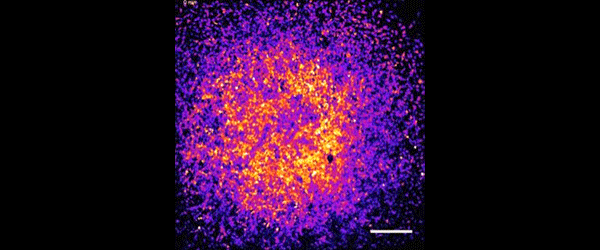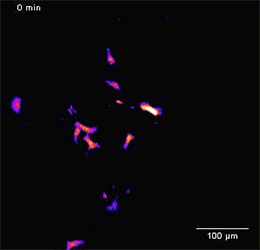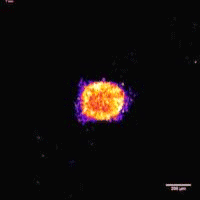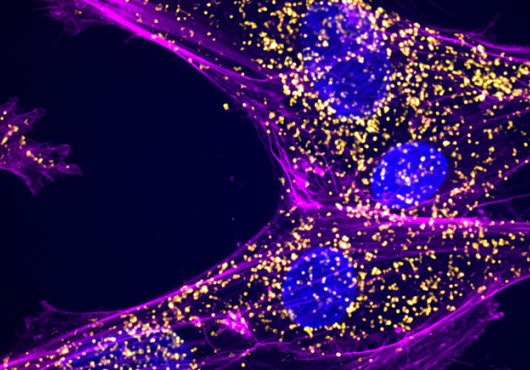
Like a string of pearls, the spine is made of a series of similar vertebrae. A so-called segmentation clock creates this repetitive arrangement in developing embryos: Each time the clock ticks, a vertebra starts to form.
In a paper published Sept. 21 in Cell, Harvard Medical School genetics professor Olivier Pourquié—whose lab discovered the segmentation clock 20 years ago—and colleagues report that they used mouse cells to reconstitute a stable version of this clockwork for the first time in a petri dish, leading to several new discoveries about where the clock is located, what makes it tick and how the vertebral column takes shape.
The team’s insights not only illuminate normal vertebrate development but also could lead to improved understanding of human spinal defects such as scoliosis, said Pourquié, who is also the HMS Frank Burr Mallory Professor of Pathology at Brigham and Women’s Hospital and a principal faculty member of the Harvard Stem Cell Institute.

The researchers found that the segmentation clock lies quiescent in individual embryonic cells that give rise to the vertebrae, then clicks on all at once, collectively, when the cells reach a critical mass.
The researchers further discovered that the clock is controlled by two signals, Notch and Yap, that are sent and received by these cells.
On its own, they found, Notch starts the clock ticking by triggering cellular oscillations that release instructions to build structures that will ultimately become vertebrae. But Notch isn’t the only signal in town.
It turns out that the cells’ Yap chatter determines the amount of Notch required to activate the segmentation clock. If Yap is very low, then the clock runs on its own. If Yap levels are “medium,” said Pourquié, then Notch is needed to start the clock. And if Yap levels are high, even a lot of Notch won’t convince the clock to tick. Scientists call this an excitability threshold.
“If you stimulate the system a little, nothing happens. But if you stimulate it a little more and cross the threshold, then the system has a very strong response,” explained Pourquié.

The researchers theorize that the segmentation clock works like other excitable biological systems that require certain thresholds to be met before sparking an action, such as neurons firing and calcium waves traveling across heart cells.
“There are probably similarities in the underlying circuits,” Pourquié said.
The researchers were surprised to find that they could stop and restart the segmentation clock in several ways—physically, by separating and reaggregating the cells, and chemically, with a Yap-blocking drug.
“For many years, we have been trying to understand the clockwork underlying these oscillations,” said Pourquié. “Now we have a great theoretical framework to understand what generates them and to help us make and test more hypotheses.”

Pourquié shared senior authorship of the paper with Lakshminarayanan Mahadevan, the Lola England de Valpine Professor of Applied Mathematics, of Organismic and Evolutionary Biology, and of Physics at Harvard University and a core member of the Wyss Institute for Biologically Inspired Engineering.
Alexis Hubaud, a former postdoctoral fellow in the Pourquié lab who is now at the Novartis Institutes for Biomedical Research, was first author of the study. Ido Regev, a former postdoctoral fellow in the Mahadevan lab who is currently at Ben-Gurion University of the Negev in Israel, was also an author.
This study was funded by the European Research Council, the National Institutes of Health (grant R01HD085121) and the Human Frontier Science Program (RGP0051/2012). Authors were additionally supported by fellowships from the French Ministry of Higher Education and Research, Fondation pour la Recherche Médicale (FDT20140930947), Schlumberger Foundation and MacArthur Foundation.





